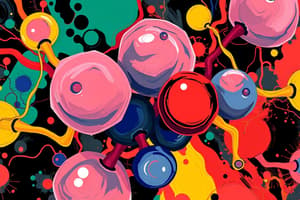Podcast
Questions and Answers
What does it mean to have a narrow therapeutic index for a drug like digoxin?
What does it mean to have a narrow therapeutic index for a drug like digoxin?
- Plasma drug concentrations that produce toxicity are very close to the minimum concentration at which a beneficial effect occurs. (correct)
- Plasma drug concentrations are extremely variable from animal to animal.
- Plasma drug concentrations that produce toxicity are very low.
- Plasma drug concentrations required to achieve a beneficial effect are very high.
What are early signs of digoxin toxicity in animals?
What are early signs of digoxin toxicity in animals?
- Decreased appetite, anorexia, diarrhea, and vomiting (correct)
- Increased coughing and difficulty breathing
- Increased urination and increased water consumption
- Wobbly gait, fainting (syncope), and disorientation
Which electrolyte change greatly enhances the risk of digoxin toxicity?
Which electrolyte change greatly enhances the risk of digoxin toxicity?
- Hypernatremia
- Hypokalemia (correct)
- Hyperkalemia
- Hypochloremia
Which drug would be most effective against dermatophytes?
Which drug would be most effective against dermatophytes?
What effects can be expected after receiving atropine as a preanesthetic classified as an anticholinergic drug?
What effects can be expected after receiving atropine as a preanesthetic classified as an anticholinergic drug?
Flashcards are hidden until you start studying




